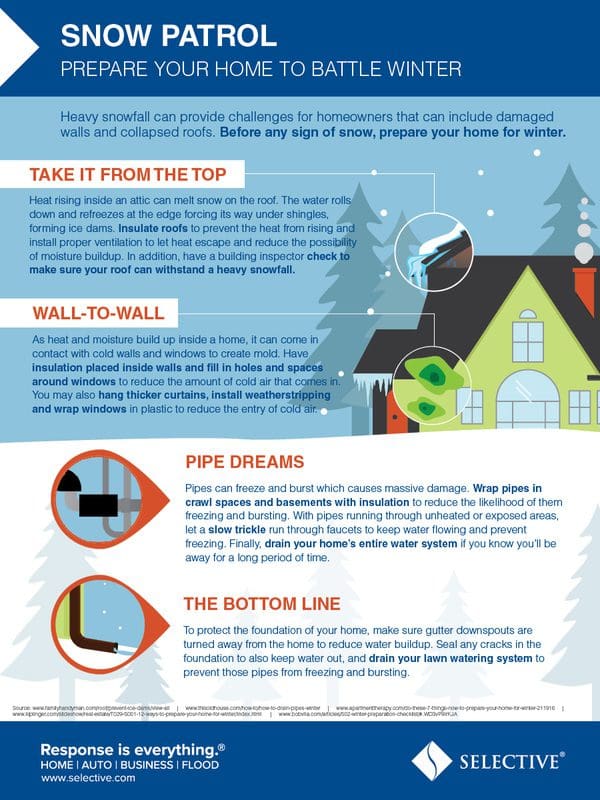Winter can be very tough on a home, especially if you have not taken the necessary steps to prepare for the harsh weather that is right around the corner. Winterization projects can be relatively straightforward and affordable, all the while preventing significant damages that can hinder the comfort, safety and integrity of your house throughout the colder, wetter months.
Let’s go through some of the key preventative measures you can enact to prepare your home for winter.
Energy-efficient improvements
The very same steps you need to take to keep your heating costs down can also be viewed as protective for your home’s structure and systems. Popular Mechanics, a publication devoted to technology news and tips for consumers, suggests the following steps to boost your home’s efficiency and protect it from common damages associated with winter weather:
- Bring in a professional service provider to prepare your air conditioner, water, fuel, vent and all other systems and pipes.
- Consider replacing normal doors and windows with storm-proof products.
- Get your furnace serviced, and change out filters that were used last winter.
You will also want to thoroughly evaluate your home for drafts and leaks, which are most common in attics, crawl spaces and basements, but can be found virtually anywhere. One of the easiest ways to check for drafts is to light a candle in the center of each room of the home and watch to see if the flame flickers or bends. Once you’ve identified the drafts, use weatherstripping and caulk to seal them up.
Roof and drainage
To prevent flooding both in the home and outside, you will need to prep your roof and irrigation system. Here are a few tips:
- Cleaning and removal: Clear all gutters of leaves and other debris before the first snowfall. Remove snow from the roof during times of very heavy precipitation.
- Ice dams: If you have a sloped roof, ice dams can be an issue. This Old House, a home improvement website, suggests putting ice melt products that contain calcium chloride into a porous material, such as a stocking, and placing it on ice dams for safe, easy removal.
- Avoid floods: Always make sure the roof’s drain pipes are pointed away from the house, and that your irrigation system and lawn have been winterized to avoid damage from the increased precipitation.
Protective measures for plumbing
Frozen pipes can lead to massive expenses and damages. The Balance, an online publication that offers a range of tips to consumers, suggests wrapping all exposed pipes and plumbing with insulation. According to the source, you will need to keep your valves and taps open to prevent water from staying in the pipes, which can lead to freezing and expansion, followed swiftly by cracks and damage.
Even when you are not home, the website recommends keeping the home’s temperature warm enough to prevent freezing of any kind. This can be trickier for pipes that are outside or in parts of the home that do not have access to heat. In these situations, The Balance states that heat tape can be used to protect pipes. Also, when temperatures dip below freezing, keep your water dripping in sinks and other faucets to further prevent freezing and bursting in the pipes and plumbing.
Get the right coverage
Make sure that your insurance provides the coverage you need for your home this winter. Winter involves more precipitation in the Northeast, which could lead to flooding – a threat that is not generally covered by homeowners insurance. Speak to your us to ensure all of your assets throughout the home, as well as the structure itself, are protected by your insurance coverage before the harsh weather sets in.

